Norway Maple trees are the trees nobody wants, for good reasons.
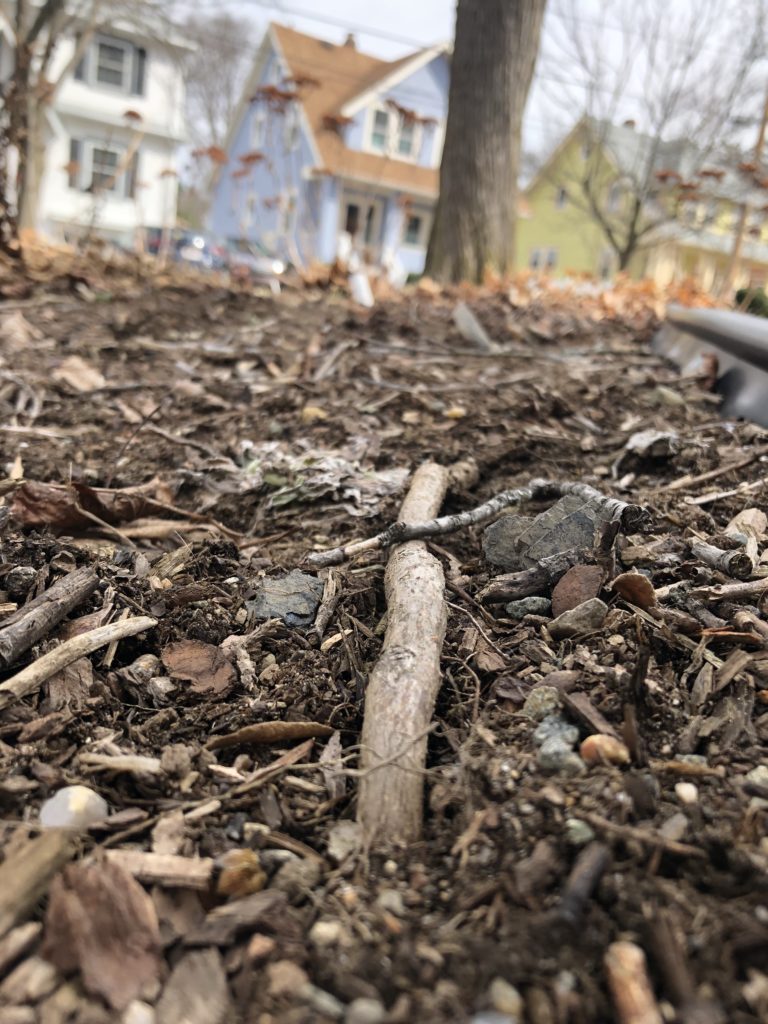
Norway Maples on the MA list of species prohibited from sale or propagation, but they reproduce on their own in such great numbers that the idea anyone might buy one seems silly. Go to most people’s yards in the Boston area and you can have dozens for free.
They grow fast, shading out the competition. They also spread roots near the surface in such a thick mat that it can be difficult to dig through with a shovel, let alone for a plant to get a healthy start. And it isn’t just under the drip line. In the photo to the right you can see a 1″ root 26′ away from the tree. At that diameter, the root is certain to go several feet further with dozens of side branches coming off the root and contributing to the dense mat underneath these plants.
In this instance, the maple is a street tree, so there is limited ability to do much about it. The tree does provide the home with pleasant shade and, of course, trees are good. Can we get it cut down and plant a new one? Yes, probably, but the “hell strip” it resides on is small and even after grinding the stump, it will be difficult to place another tree there for some time. The best option for the moment is to let it live and grow compatible plants.
Each year we try a few new items to see if they’ll survive under Norway Maples. Most do not make it, but the ones that do we try to install more. One thing you may notice is that contrary to what we usually do, many (most?) of what we grow under the Norway Maple is NOT native. There just aren’t a whole lot of native species that do well under Norway Maples that we want and/or meet other criteria, which include:
- Plants must grow well in half-shade,
- Due to the roots of the Norway Maple, plants must do well in very dry soil,
- Also due to the roots, the soil is nutrient deficient, so plants must be able to handle that,
- Die down to the soil surface each winter,
- While we’re fine watering to help plants establish, we have zero interest in long-term irrigation or amending the soil here with anything other than mulch (typically shredded leaves).
With those criteria, here is a list of what we have found survives, and in some cases thrives here:
- Sedums come in a variety of shapes and sizes and colors, and neighbors are often giving away sedum when they divide plants, or you can just ask for a few stalks and plunk them in the ground (or in a container to grow them before transplanting under the Norway Maple). A combination of free, readily available, an ability to survive under Norway Maples makes them a great choice. Leave the flower heads up all winter for a pretty contrast against the snow.
- Succulents (other than Sedums) such as Hens and Chicks and other low-growing varieties in different colors provide a nice accent and will do well with the limited water available. They also do a good job surviving the winter with or without a thin layer of shredded leaves as a blanket.
- Bulbs. Many bulbs will do well and come back year after year. Crocus, tulip (survives but prefers more sun), daffodils, and hyacinth, to name a few. I don’t think I’d try allium there, unfortunately.
- Canadian Wild Ginger (Asarum canadense) is something that survives, but it certainly doesn’t thrive under the Norway Maple. It is also small and doesn’t spread there, so you really want several plants to make it look nice.
- Lady’s Mantle (Alchemilla) blooms late spring/early summer with lots of tiny yellow flowers that pollinators love. The leaves look a lot like Heuchera to me, and it pairs nicely with Heuchera “Coral Bells” and others. I think it is especially beautiful after a rain when droplets are captured on the broad leaves.
- Heuchera isn’t just crimson red, you know. There are a number of varieties of different colors, variegated, and heights available. This is another plant that people are often happy to give away when dividing and it does well.
- Bowman’s Root (Gillenia trifoliata) is a taller perennial which, like everything on this list, dies back to the ground each winter. They’ve survived two years so far, so I probably shouldn’t add it to the list yet, but here we are.
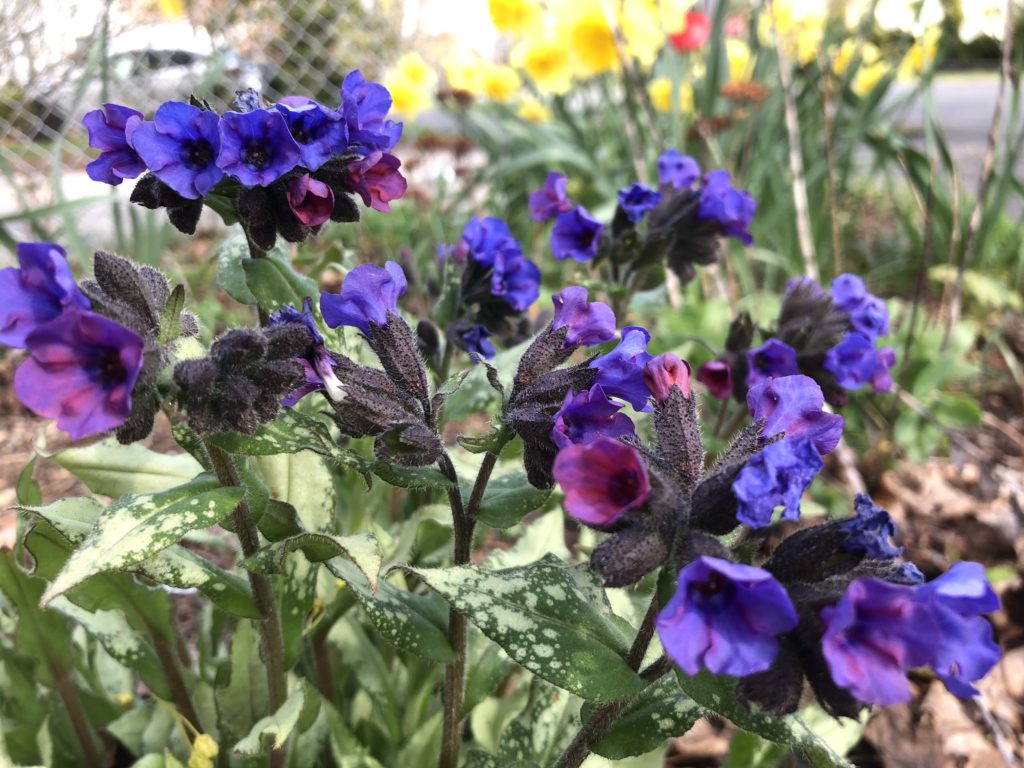
- Lungwort (Pulmonaria) grows very well under the Norway Maple and is one of the few plants that’s grown well enough that we’ve actually had to divide. Unfortunately it provides early spring appeal and by mid-summer looks kind of crummy. Still, I love it.
- Solomon’s seal (Polygonatum) and False Solomon’s Seal (Maianthemum) both do well under the Norway Maple and provide a medium height.
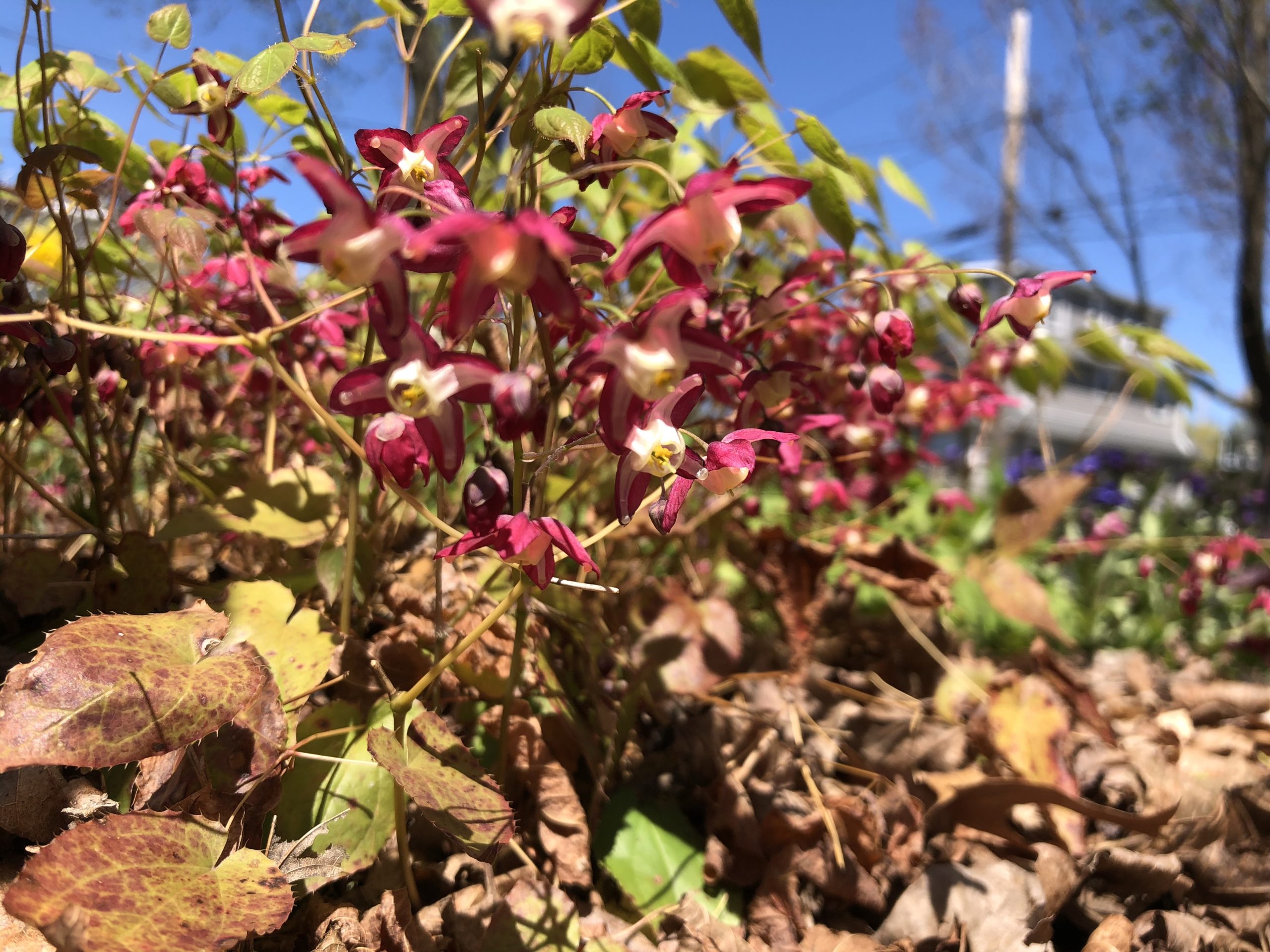
- Epimedium, which has a number of common names including “Horny Goat Weed,” with its fine delicate stems and (short lived) dainty flowers is a favorite plant of mine, and it does well under the Norway Maple.
- Geranium is another that grows so well under the Norway Maple that we actually need to divide it… sometimes… rarely… every few years, but it does grow!
- Honeysuckle (Lonicera sempervirens) does surprisingly well near the Norway Maple and, as a favorite of hummingbirds, is a favorite of ours. It is good along a fence, on an arbor, etc., but obviously not good to put in the a flat expanse and probably not great too too close to the Norway Maple.
- Ferns can be a good option but you probably want to steer clear of ferns that will take over an area, such as Eastern Hayscented Fern which can completely colonize an area. I have found that Christmas Fern (Polystichum acrostichoides) and Cinnamon Fern (Osmundastrum cinnamomeum) both do well, despite typically preferring wetter conditions.
- Purple coneflower (Echinacea purpurea) was something of a surprise, but at the edge of the drip line (and in as much sun as possible) seems to do okay.
The smaller, more drought tolerant species do best closer to the tree – that shouldn’t be a surprise.
We have a few other plants we’re attempting under Norway Maples but until they’ve grown a few years and we can say with confidence they’ll survive, I’m not going to list them.
The closer your plants are to the Norway Maple, the more difficult it will be to grow successfully. It can be difficult to grow just grass and clover near the tree. Maintaining a mulched area around the tree where nothing grows easily anyway, is a good option.
Removing Norway Maple trees has become a more complicated issue these days, with the realization of just how behind the 8 ball we are with climate change and recognizing that trees, regardless their invasive status, capture and hold carbon. There are also situations (such as ours) where removal might be complicated and involve municipal regulations.
So I’m not going to address that issue today but I will say this: If a tree is removed and you have the option of keeping the chipped material for use as mulch in perennial beds, pathways, etc., take advantage. Not only is it good for the soil but you’re keeping some portion of that carbon local, on premises, rather than sending it off to a waste to energy facility or similar in trucks that have poor MPG.
If you have plants growing well under Norway Maples, please leave a comment below or on Facebook, and thanks!

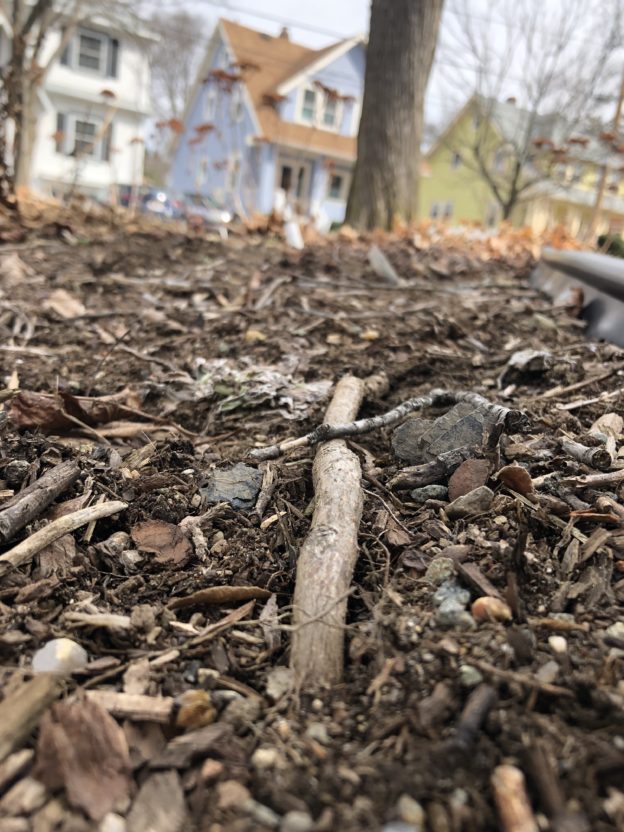
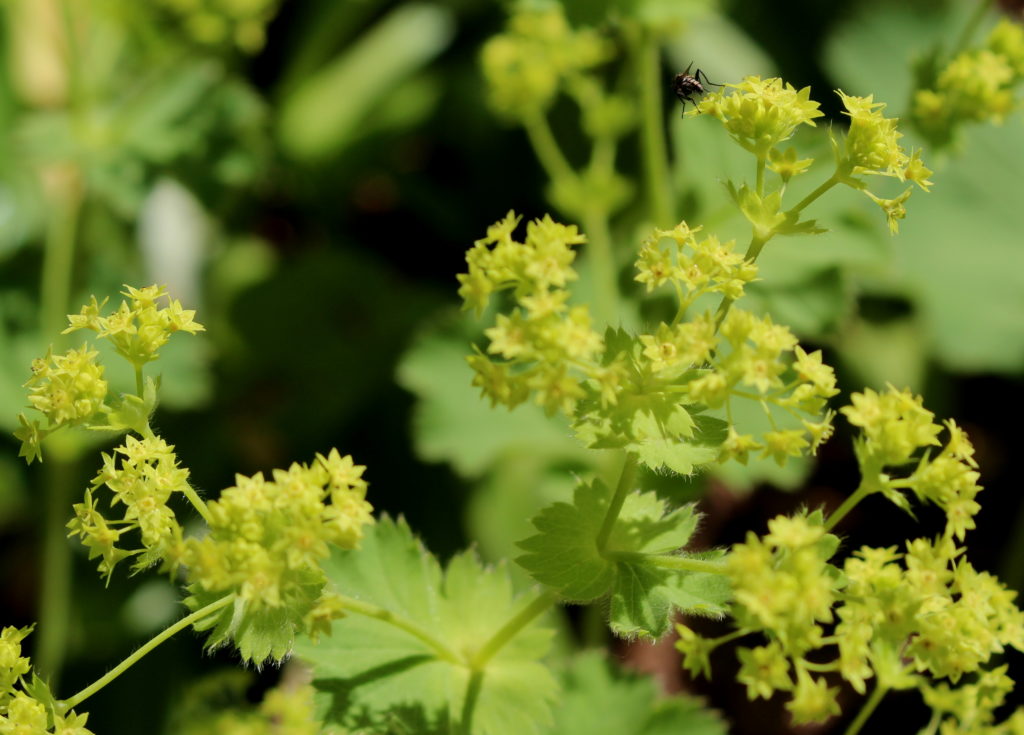
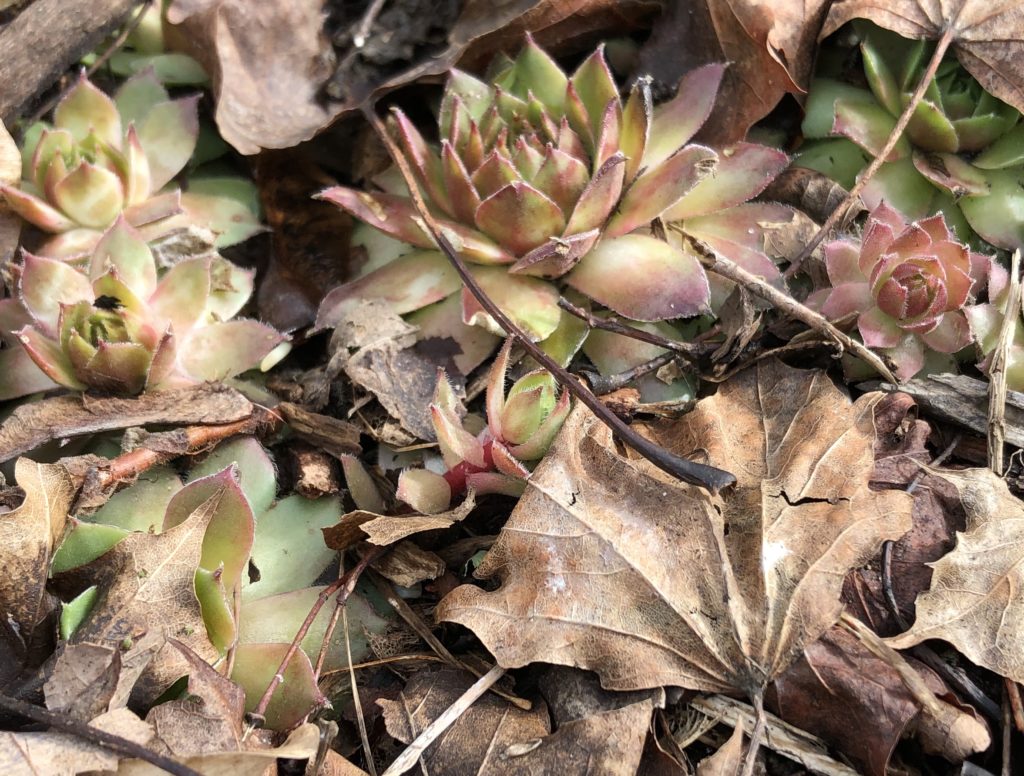
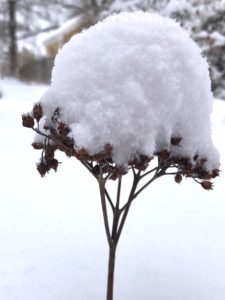
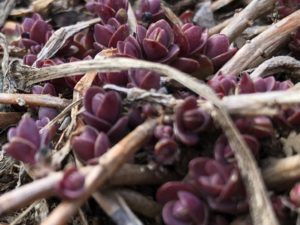
Moss phlox! I have 5 norway maples bordering one side of my property and the moss phlox is the only thing thriving there. Thanks for this post!
Jeremy. Do you have any suggestions for evergreen shrubs that might grow near the Norway Maples? Or even deciduous shrubs that will not die down. I am wanting to create a shrub border of at least 8 ft high, but the neighbors Norway Maples are right next to our property boundary. I see some suggestions above, but no evergreens other than possibly a mountain laurel. I am thinking about Azaleas, Rhodos, Hollies, Hemlock, or Firs. The first two may require too much light and water.
I inherited atleast nine Norway Naples on one side of my yard that stand infront if my neighbor’s horrible chain link fence and dilapidated shed. When I moved in six years ago it was the second bed I focused on the first being my front yard. I had a small idea what I was up against but would have made different choices from what I know now. The evergreens that I have had success w are green giants and skip laurels. They are not growing as quickly as if they would be in full sun or better soil, but they are evergreen and they are growing. I have an english laurel that is not doing well. But I don’t think it was healthy when I planted it so I’m not sure I can blame it on the maples. I have a hetzi juniper doing OK. It’s green and growing in heavy shade. It gets lots of berries. I have two golden hinoki false cypress that are alive, but have grown maybe a foot in four years. ( on drip line w some sun not in total shade from the canopy ) But they look healthy, just haven’t grown much. I also have a dwarf rhododendron variety that has never flowered and the leaves look shriveled. I’m not pulling them out. I’m just going to apply systemic fertilizer for a few years to see if they do better. I did it this year for the first time and I have buds for next year on the bush. That’s a first. Finally, I have two mountain fire andromeda that have grown the slightest bit in five years and one barely flowered this year. ( also a first) I have to water during droughts. my hostas I recently dug up two and they were completely strangled. I have to take them all out. I have a Bloodgood maple that seems to be OK. Also not growing quickly but it is growing in an open spot from where I took down a N maple. However, there are two Norway’s on each side of it. It’s sitting in the middle, probably 4 feet away from those two Norway’s. I have a rose creek abelia doing fine and flowering. I have two dwarf varieties of big leaf hydrangeas that did flower this year. They’ve only been there two years but I have to water them atleast weekly. I Hope this helps. I have to say it’s exhausting and I wish I could take them down. ( as Jeremy mentioned in the qualifications, he didn’t want to water once established) I don’t want to water weekly but I can’t stand a chain link fence. Can’t take down nine trees and I wouldn’t have bought the house if I knew. Good luck!
Thank you for your exhaustive response! That helps a lot!
I have two rhododendrons and an azalea just a bit further back than the Norway drip lines. They have only been in a couple years. Slow progress on the Rhodos, though the one that has been there 3 years seems to be coming along now, and Azalea is suffering. I think I am going to go a bit further around their perimeter and slice down with a shovel to try to cut off some of the Norway roots. That won’t stop ones from below, or from new roots sprouting there, but thought it may give the Rhodos a bit more of a chance.
Good luck with all your efforts.
I do know I had a HUGE Fosythia that started under a big Norway, and thrived – though it spread towards the light. It had NO PROBLEMS under a Norway, if you are looking for a good screening shrub. We took it out to get more yard – and before we knew that little else was going to be happy there.
Has anyone tried to plant Azaleas, Rhododendrons or Hollies under the Norway Maples.?
My neighbor has about 30 young maples right on her side of the wall of the property (about 100 feet long, 10 feet deep – the result of a clearing away 15 years ago and all the resulting multi trunk regrowth). Her new house and driveway are right up to our wall. I want to plant somethings that will create a visual barrier without walling me in with a board fence. My lot is not deep, so I cannot plant far back from the trees. Looking like a row of firs may be my only option.
You might have more luck with an Oregon grape holly instead of a traditional holly. They are native to NE and I have one that set itself from who knows where and is doing so well that I am going to get more to create the screen I want.
I also have sweet woodruff as a permanent carpet groundcover with a few hostas interspersed. Yew have taken but are very slow.
We planted to maximus rhodos here in midcoast maine under our giant norway maple. We are two years out and they are struggling for sure.
One shade plant I do not see mentioned are Hostas. Has anyone had success with hostas under a Norway Maple? I just made a small bed that is under a stand of Norway’s, but has the advantage of a huge bolder between it and the tree trunks. I dug out one shovel deep and added compost. Was hoping to make a small (dozen or so) bed of hostas.
I am trying to grow Hostas under a Norway Maple. It isn’t working well. I added about 3 inches of topsoil with the hostas. I kept them watered for the first 2 years. Most are surviving but none are thriving. They get enough sunlight at the edge of the drip line. One hosta was especially struggling so I dug it up-The roots were entirely entangled in maple roots. I will move them away from the trees before they all succumb to the maple roots. I am looking for other solutions.
So far, hostess have worked for me.
The hostas I planted are struggling under bb the n. Maples. Some were dying so I dug them up. The roots were strangled with maple roots
About 4 yrs ago I planted a ton of mature hostas (divided up from neighbors) under one Norway maple and they are all about gone. What is left, are small and dying. I hate to keep mulching under both our Norway’s cause it’s such a big area, but I’ve tried so many things and nothing takes. I transplanted a bunch of beautiful ferns this year and they already look terrible.
Thank you for the input on hostas. I now have about 20 in larger pots set in under the Norway temporarily until I can figure out where else to put them.
I spent the last year planting a huge variety of hostas in a remembrance garden for my father. It wasn’t until last night after Googling, “Norway Maple” did I realize why my beloved hosta collection just wasn’t taking….😔 THANK YOU sooooooo much for listing what does grow!! Looks like I’m back to the drawing board!!😉
Thanks to everyone for your suggestions. As I am very keen on planting native plants, I am considering trying the low growing native shrub Maple Leaf Viburnum. It is supposed to do well in dry shade and has nice fall colour, which my Crimson King Norway Maple does not have. It suckers, but low growing native shrubs and leaf mulch as groundcover that feeds birds and pollinators sounds good to me, if it actually fills in and does ok with the extensive tree roots. Is there any chance the viburnum’s suckering could harm the Crimson King?
I’ve had ok success with wild ginger, common wood sedge, Virgian bluebells, wood sorrel, Pennsylvania sedge, American bellflower, wild violet, and wild geranium.
As much as we might hate to do it, sometimes the best thing is just cut your losses and cut the tree down and plant a native tree that does do well with plants growing under it. There are cultivars of red maple that have been interbred with silver maple for faster growth, and they would make a very nice substitute for these norway maples. Or something like honeylocust, river birch, pin oak or tulip tree or even white pine if you want something massive. Or even a small tree like redbud or service berry or a flowering cherry. Dogwoods are a no no, they don’t like to be underplanted. Crabapples don’t mind a bit. I was once told by a landscaper friend that “You can put tinfoil on a turd to dress it up, but in the end it is still a turd.” I understand why someone would want to keep the tree, I have a couple of problem trees in my yard that are standing for now. But in the end, you’re often wasting both time and money. The blog author states her reasons for keeping the tree, but unless you have a similar one, just cut it down rather than commit yourself to decades of frustration and dead plants. They may even thrive for a year or so on the fertilizer they got at the nursery, but in the end, the Norway’s roots will win the battle. And then once its victory is complete, in about 80 years it will start to go hollow and die and fall over on your car that is parked along the street. Saw that happen after a windstorm once in my neighborhood with old Norway’s as street trees . . .
Sometimes it is your neighbor’s tree, so you would get in big trouble if you cut it down, lol. That is our situation.
New to this blog. With regards to using Norway maples as a hedge, there are several cultivars of Norway maple with varying characteristics. Most well known is the “Crimson King” variety with red leaves. However, there are cultivars of the tree that are bred to have a “fastigiate” growth pattern, which means they grow tall but not with a wide crown, it is narrow. They are suitable for a tall hedges. I have seen Persian Ironwood bred and used the same way, as a tall narrow crowned tree. The only downside to those fastigiate trees is you don’t get growth down along the trunk, so they are for the purpose of blocking a view from a taller height, like the second story of your neighbor’s house. There are also “hedge maples” known as Amur maple, which has a more shrubby growth. But if I wanted a tall hedge, I would go with a native shrub or tree like yew, hemlock or arborvitate or some of the large viburnums rather than a norway maple. The native Maple leaved viburnum is the perfect shrub to create such a hedge. Although my parents lived at a condo where a row of those fastigiate Norways did a great job of blocking the view of folks on the second story, of the parking garages and the foundry across the street. Ironically the folks on the second story complained they were blocking the view so they kept topping the trees, I guess hoping for lateral growth instead, not realizing that it was futile. and eventually the trees died . . . Proving ever again that “right plant, right place” is KEY.
I have four mature Norway maples that I “inherited” on my property, here in Western Massachusetts, Zone 5B. I have tried many different kinds of native ferns, but none thrive. Here are some native plants that found their way under the trees and are doing really well. I didn’t plant these:
– common cinqufoil (closer to the drip line where they get more sun)
– eastern star sedge (also closer to the drip line but thriving! a real colony has developed)
– ohio spiderwort (by the drip line)
– various native asters, some of which are hard to identify. Maybe heath aster, definitely blue wood aster
– wild violet (by the drip line)
– black-eyed susan (under the smaller tree with more sun)
Introduced plants that do well:
– lungwort
– early meadow rue
– bowman’s root
– lily of the valley
Is it possible to ‘contain’ a line of young / newly planted Norway Maples to make them into a dense hedge rather than let them expand into big trees? I have been6 or 7 bare root plants and would like to do this rather than grow them as single specimens, but if it’s a no-go from the start I’ll find the room to let them do their own thing! Thanks!
The effort to grow Norway Maples as a hedge would be significant due to the speed at which they grow, and very difficult as they naturally want to grow 40′ and taller.
Please remember that Norway Maples are not native to the US and are considered invasive in most states, including MA. I encourage you to destroy the saplings rather than place them elsewhere, and instead find other, native saplings to plant.
Thanks Jeremy, what a quick response! I’ll probably grow them as singular specimens then. I’m not in the US and they are not considered invasive here (Bulgaria). They will be planted in my horse fields. They will be protected from the horses so they can grow but any saplings that spring up will, for sure, be dealt with by said horses! I’ve already checked that they’re not toxic. Many thanks for your input.
Thanks for the suggestions. I’m an avid native gardener, however I’m willing to give a few non-invasive non-natives a go.
I’m currently experimenting with Pennsylvania sedge closer to the drip line. Also plan to winter sow common violet and wild strawberry this year. *fingers croseed*
I’ve got a lot of content wood sorrel and some wild ginger limping along, however most everything else has died after a couple years (wild geranium, wood poppy, mayapple, ferns). Last winter I direct sowed a dry shade seed mix from a native nursery and basically nothing has come up except a few small, scattered columbine.
I do have an army of Virginia bluebells that grows bigger every year. They’re super happy (and gorgeous), but gone before June.
How refreshing to read these posts!! I thought I was an accomplished gardener until I moved to northern Michigan and tried to garden under 3 large Norway maples. The feeder roots are shocking! I actually buried pots to give my plants a fighting chance only to find roots growing up the drainage holes or over the tops!! For the past 10yr it has been an expensive trial and error period with any shade loving plants. Like many of you I want to create a lush garden with these maples as focal anchors. Doing well are (forgive me no scientific names) trillium, wild ginger, artic currant bushes, lenten roses, coral bells, painted ferns, woodruff. I am going to refurbish this bed next spring, using better soil, compost and plants that have a reasonable shot at succeeding. Thank you.
Lavender is growing nicely under the Norway maple, though it was there before the maple. Coneflowe just looks dry and sad. Sedums are doing well and geraniums as well as the mayapples.. Unfortunately this maple is just on the other side of the fence to my neighbours. It was just a sapling that self started and she has let it grow. Two years later and it is over 20 feet tall. I shudder to think what it will be like in another two years. I used to have a green mixture of clover and grass. Now I have a growing brown space and the dry gadern which is next to the fence. Further back in the yard it wouldn’t bother me so much but this is just steps off the deck. I’m trying to figure out how to redesign the backyard cost effectively while also hoping she comes to her senses and cuts the thing down!
we have a whole slew of Norways, having limited success with Rose Of Sharon, violets, lilly of the valley and some beach grasses, Im waiting for my newly planted natives to get a few more years in ( ‘serviceberry, hornbeam, tupelo, river birch, couple oaks) and then want to take down the biggest/worst offenders.
I’ve had some success with periwinkle but it will not spread to the sunny south side of the tree. That side has become a dusty desert!
PS. Not sure if it makes a difference, but I’m based in the UK, in the South of England..
Hi, this is a great resource, thanks everyone! I’ve just discovered that what I thought was a sycamore in my neighbour’s garden, two doors down is in fact a beautiful big Norway maple. Our boundary starts roughly where the canopy of the tree ends, how far will the roots extend and are they likely to cause a problem for planting? We only moved in in Sept, so still clearing our narrow but overgrown garden and planning what to put where, but had been hoping to put my veg patch along that bit of fence as it’s really the only place for it. Will that work? Thanks
Yews will grow under Norway maple. They will need supplemental water for a couple years but then are fine. They grow more loosely in the shade but I have one a few feet from trunk of a 20-30 year old Norway maple and haven’t watered it since year two of transplant. Lilly of the valley and hostas grow under my huge (50+ year) Norway maple. Glad to know some have had success with hellebores as I have hundreds of seedlings that can be transplanted and seem rabbit resistant (unlike the hostas which were decimated last spring by Peter rabbit and family. This is great thread. Thanks for the ideas. I have to wait for Massachusetts soil to thaw before I start digging though.
Thank you for this. I have been beside myself trying to find things that grow under a Norway Maple! I can add to your list: Baptisia, Forsythia, Brown Eyed Susans and Hydrangeas (white only). I have a rudbeckia that is doing okay into year two and Japanese Anemones are spreading after 10 years.
Those are great additions, thanks!
What kind of white Hydrangea did well? Do you happen to know the specific name? I have a QuickFire Hydrangea that I am hoping will work along the line of Norways on my property border. Starts white, but turns reddish over time.
Thanks for your post. I have returned to it several times over the past year. I have tried quite a few of your suggestions. Sadly I have found most survive and do not thrive: Lungwort, hostas, coneflower (okay), heuchera, sedums . I just planted geraniums – 1 died inside of 2 weeks. Hellebores, however, are really taking off as are my bears breeches. My question: are there any small evergreen shrubs that would hold their own? I haven’t had luck though planting at the drip line.
Wow, I am so impressed with this post and resulting thread. So helpful! Here is my plan and am hoping for input: dig a 3 foot deep trench between N. Maples and the area where i plan to plant other trees/shrubs, and then line the trench with 3 ft root guard (like a thick polypropilene, tough, recycled plastic barrier) that is supposed to prevent roots from penetrating and sends them downward. Do you think this is a loosing battle?
I think that the roots will likely go around and under the barrier, unfortunately. So if you’re doing this in a smaller area, the time and expense might be worthwhile to slow things down and the ever important feeling that we’re doing something. In the long run though, or if it is a larger area, it is likely not going to work and might be cost-effective to remove the tree instead. (Or, just grow things that will actually grow under the Norway Maple.)
Would rhodies or mountain laurel work? Or will it be too dry for them?
Linda Dunn,
When I bought my house there were a total of 3 mature Norway maples in front (2 in the front yard on the north side of the driveway, and the third on the south side of the driveway).
I have 3 Mountain Laurel cultivars that are surviving, blooming yearly, but aren’t that happy being between maybe 6′ and 9′ away from the trunk of the nearest Norway (on the north side). I know that one of the cultivars is Minuet. I wonder if the straight species would be doing better.
The serviceberry I tried near one of our two Norway maples did not thrive. It started looking so bad, I pulled it out and gave to a friend. So I don’t think it will be successful as a living screen ^ 🙁 I also find that my bane berries are barely surviving under the Norway maple. I think it is just too dry.
Epimedium, Canada anemone, and a couple ferns are still my favorites under Norway maple. I also have some wild ginger, Solomon’s seal, and May apples that I put in one year ago that came back this year. Here’s hoping they can all make it for the long haul.
I’m trying to plant inkberry about 6-7 feet away from a Norway maple. Found a giant root when I was digging one of the holes so I’m worried that my new shrubs won’t survive. Wonder if it’s all hollies that struggle or just some of them. I could kill the tree as it’s behind my back fence in no man’s land but try to leave trees be where ever possible. Tough call!
Hi,
Has anyone tried to planted Oakleaf hydrangea under a Norway Maple?
I have a dwarf oakleaf hydrangea that’s done well its first summer under the maple. We’ll see how the winter goes.
Massachusetts here.
Oak leaf hydrangea does grow – and has for many years- in my Oregon garden under Norway maple shade but needs lots of irrigation during our dry summers. I am planning to take mine out because I don’t want to water it two or three times per week!
I have, I tried to plant an oakleaf hydrangea about 10′ away and it did not do well… 🙁 Zone 5b Southern Ontario
Thank you for sharing that information!
Thank you very much for this post! I am dealing with a similar situation, where the “offending” Norway maple is a street tree. It’s also a century old giant with a huge and dense canopy. Actually it has already exceeded the average life of a Norway maple, and we are expecting that the tree will have to come down in a few years. I am wondering if you have any advice on compatible plantings that can help prepare the soil for a replacement tree? TIA!
The two native plants that do well under our maple is zig zag golden rod and Canada Anemone. A non-native that does well is Rose Campion. These did not start out as intentional planting actually. The birds/wind brought them over, and I just rearrange them a bit from time to time.
I’m glad you enjoyed it! I don’t think there are any plants that can help prepare for taking down the tree, but you can certainly start preparing a list of what you want to grow there. Consider the immediate change in sunlight and the eventual change in available water/nutrients once the tree is gone.
Some of your same plants, like the Goldenrod, will be just fine. The anemone, without competition, may suddenly start taking over, so keep an eye on that. Beyond that, you’ll have a much larger palette available to you!
This is a great resource – thanks! My Norway maple has roots coming out of the ground beyond the drip line. We have a few plants managing to survive close to the trunk – a small hosta and solomon’s seal (that def does not spread there!) and have raised beds farther out, beyond the drip line, where things do fairly well. I’m looking at putting in more raised beds (for vegetables, open to ground) and gravel paths where the ‘grass’ is (mostly weeds!). This would be beyond the drip line but still with the roots around. I’m wondering though if doing this would somehow hurt the maple, or if the roots would end up spreading into the vegetable bed?! As well, is the fact that the roots are out of the ground far from the trunk a sign the tree is suffering or lacking in nutrients or something? Is there something we can do to help it?
Thanks for any advice you can offer – very much appreciated!
I think you’d likely find those raised beds filled with roots from the Norway Maple.
However, I’d caution about making a gravel path. They typically look great for 1-3 years before debris fills in the gaps and more weeds start to grow. At that point you’ll want to eliminate the weeds, which can be done by hand but this inevitably raises some soil, which then makes it easier for more weeds to grow. As a result, people often turn to herbicides and spray the entire area. Eventually the area ends up looking not so great and people pay to get rid of all those stones and bring new ones in.
Instead, you might consider a pathway of just mulch/wood chips. As they decompose, they’ll feed the soil. Once they’re in a condition that you’d like to get rid of them, you can compost them and get new mulch. It is sometimes possible to get arborist chips for free. (Some companies will only drop full truckloads because it takes time to unhook the chipper and dump the contents.)
Thanks so much for the quick reply!
I haven’t had problems with roots in the other raised beds that I know of, but with these being closer to the exposed roots. Gah! I guess I’m trying to understand *why* the roots come out of the soil?
Point taken about the gravel paths. We live in an area with a lot of ticks though, and I’ve heard of issues with having mulch/wood chips for paths – though we do have mulch on garden beds, I guess it’s different to be walking on them. But I do like the idea of feeding the soil. Hmmm.
i don’t know where my manners are — i forgot to mention — thank you very much for the post!
Seconding Paul’s question – we have a similar situation with 6 Norway maples lining our property towards the street. Is there a way to get some green privacy screen under/around them?
That is a tall order, literally, due to the height.
My first thought goes to non-living borders (fences). They’ll obviously survive with the least amount of effort.
My next thought, if you want something living, is to consider perennials that do well in the climate that Norway Maples produce: Dry, shady and bereft of nutrients.
I want to caution that I DO NOT KNOW IF THESE WILL WORK, but some you might consider include:
Amelanchier (serviceberry), Clethra alnifolia (sweet pepper bush), Fothergilla, some of the more drought tolerant Mountain Laurels, some of the taller Ninebark varieties.
I also want to emphasize that drought resistant varieties do need water their first year (sometimes two years) to establish. All too frequently I see people who expect their drought tolerant plants to survive their first year in drought conditions.
Good luck and please let me know what you try and how it does!
This is super helpful. Do you have any tips on turf grass species to plant under a Norway maple? This is in our yard in the main play area, so looking to have organic lawn. We’re importing 6″ of loam throughout the yard, after breaking up the dreaded root mat you described. Thanks in advance for any tips!
I’m glad you found it helpful. Unfortunately it can be very difficult to grow grass or clover under a Norway Maple because they suck up all the nutrients and water. If you really want grass there, be prepared to water it frequently. It is also becoming more likely that we’re going to need to deal with longer, hotter and drier summers due to climate change, which may make watering even more necessary to maintain a lawn.
You might want to consider simply mulching the area, or trying to grow moss if it is shady enough. We’re all going to need to consider changes to reduce our impact on the climate.
I have dwarf allium, planted at the drip line, they’re still doing great after 3 years.
I’ve also been trying to find plants that will survive but have not tried a handful of the ones you mentioned. They’ve been added to my list. Thanks!
I have a bunch of celandine poppy and hellebore under a norway maple. (wash DC area). Also some phlox. Wonder if you have any idea what hedge like(4-8ft) plants, esp evergreen, would grow up under the tree 10-20 ft from trunk?
Also, if we plan to replace it some year, are there other trees we could get started beneath it that could survive?
Sorry for the late response. You can start trees under a Norway Maple but it will not be easy, and you might prefer to just wait until the Norway Maple is gone to start anything.
The method most likely to succeed that I can think of is to pick your spot, consider the diameter hole you’re going to need, then using a shovel, cut all Norway Maple roots at least 12″ beyond that circle. Within the circle, you’ll need to remove that thick mat of roots.
Then, throughout the season, cut that 12″ beyond the circle at least twice to make sure no roots are entering where the tree is growing.
Or, like above, you might find it easier to wait until the Norway Maple is gone.
Good luck!
This list is super helpful! Thank you!